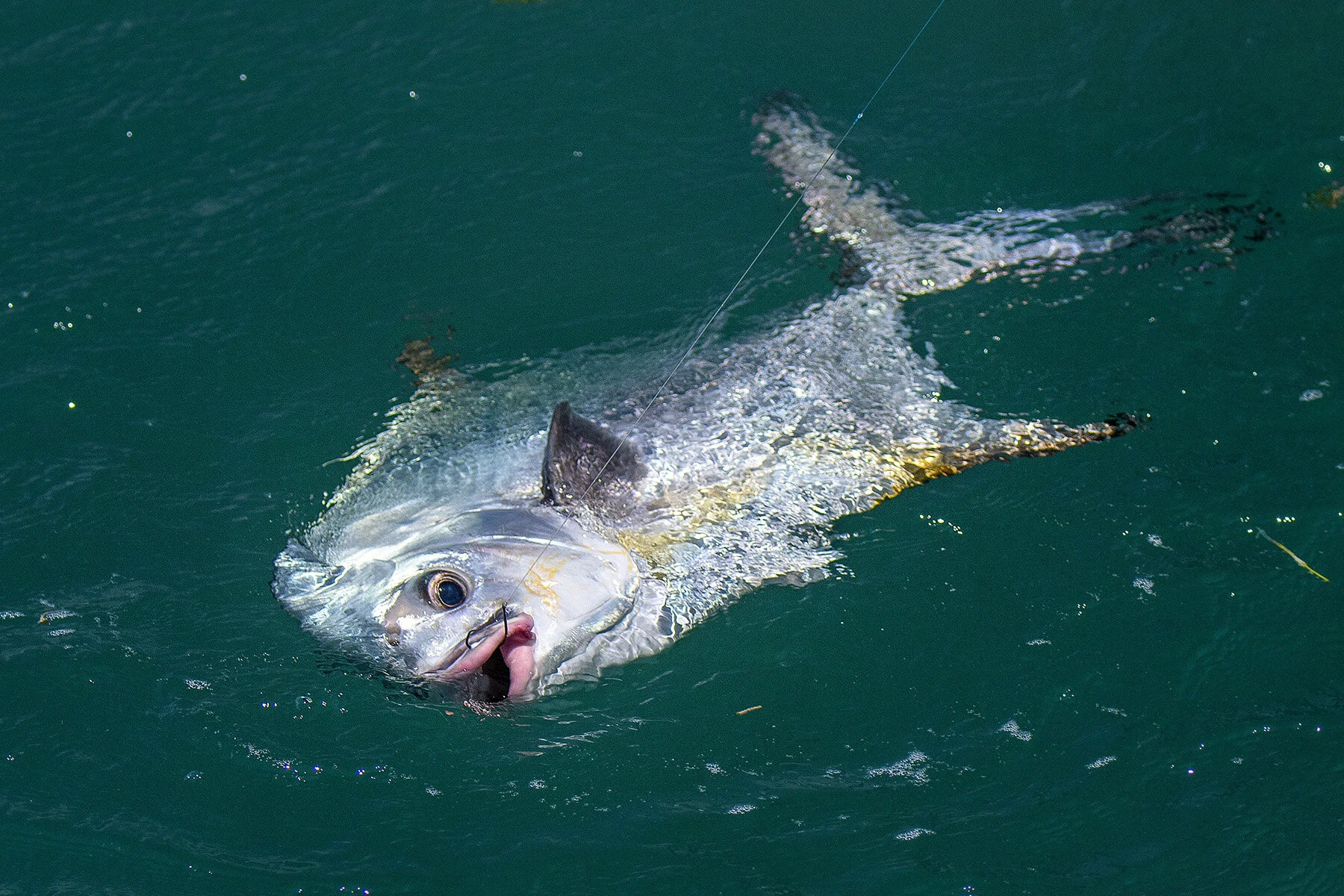How to Dodge Sharks and Elements To Catch Mutton and Yellowtail
written by Evan Anderson
Sometimes (most of the time), a day out on the water doesn’t go quite the way we planned it to. Captains Steve Rodger and Scott Walker experience this firsthand in this episode of Into the Blue. “We got there and we set up, everything was perfect,” reflects Rodger, “We caught these two monster yellowtail. But the dang sharks, bro.” Heading out to chase some yellowtail, what looks to be a very promising day fishing on the reef takes a disappointing turn when a group of sharks arrives and begins eating all the fish (and each other). But rather than repeatedly throw themselves at the brick wall in front of them (or dejectedly give up and head to shore), the two come up with a different option and decide to try their luck with mutton snappers in a nearby spot. Here are some lessons from a challenging day on this week’s episode of Into the Blue.
“Everything was perfect...but the dang sharks, bro.”
Bait is Key
“I prefer to catch yellowtail with a live bait,” says Rodger, “It’s more visual. People enjoy it a lot more, to see the fish popping on top.” As the two captains get ready to leave, the first thing they do before heading out of the harbour is take advantage of the season and fill up the bait well. “It’s wintertime, this is when the bait’s down here, this is when you want to be throwing that cast net,” Continues Rodger. For this particular season, pilchards are abundant in shallow water. And yellowtail LOVE pilchards.
“It’s wintertime, this is when the bait’s down here, this is when you want to be throwing that cast net”
Always Have a Backup Plan
As the engine cuts and the two captains drift into their position, they take a moment to assess their surroundings. “It’s actually really pretty conditions,” notes Rodger, “For the snappers and the yellowtail you want to see a little bit dirtier water, but man you talk about for the kings and the barjacks and the african pompanoes and all those other predators that live on the reef besides the snappers, that clear water is awesome.” Walker responds “I got one ready for the toothy critters and I’ve got a couple ready for the other fellers.” Always have a backup plan when setting up your tackle.
Dirtier water is a benefit to the angler seeking a yellowtail hit due to the fish’s high intelligence. “They’re a really smart fish,” explains Rodger, “There’s somebody chasing them around 365.” Because of this, you want to use lighter tackle when fishing for yellowtail. Walker and Rodger start out with 60 pound leaders and decide that, if the fish seem to be bigger here, they’ll switch to 80 pounders. The heavier the tackle, the easier it is for these fish to see it, especially in clear water.
Sharks
“And there goes our mutton. That’s a shame” says Walker after watching yet another fish get stolen by the school of sharks surrounding their boat. Predators are a constant concern out on the ocean. Not because they pose any particular threat to anglers, but because of their habit of stealing our fish! On this particular day the water was teeming with bull sharks and nurse sharks. According to Rodger, “The yellowtail wouldn’t even come up because of the sharks. It was actually weird because there were some smaller sharks actually eating the yellowtail baits.” He continues, “The sharks got so bad the bigger sharks came in, and they were eating the littler sharks.”
If the sharks get this bad, you generally have two options. The first would be to simply pack up and find a different spot, which our two captains eventually decide to do after losing several fish to the predators. This is easy to do when you can cruise around on the efficient Mercury Marine motors like Into the Blue. The other option is to put heavier weight on your line and try to get your bait down to the bottom, below the sharks. Then, when you have a fish on, you’ll want to reel in your fish as fast as possible.
“the sharks got so bad the bigger sharks...were eating the littler sharks”
@ SE Multimedia 2019
This only works to a certain extent, and if there are enough sharks in the water you won’t be able to reel fast enough. Plus, you run the risk of hooking a bottom dwelling predator such as a nurse shark like Rodger does here. At first he thinks it’s only a stingray. But,with his rod jammed into his padded Scales shorts, he realizes that this fight is way too heavy to be anything else. According to Rodger, reeling in a giant nurse shark is like “bringing up a dead engine block from the bottom.” Thankfully Walker is able to get close enough to the shark to free Rodger’s hook.
After the nurse shark incident, the two captains decide it’s time to move on. They motor out past the reef into 100 feet of water, roll up their Scales shirt sleeves, and throw their lines in for one last try. And thankfully, the mutton are biting today, resulting in a hearty catch.
If you can relate to our Captains’ predicament, check out the full episode below and see how they handle the challenges on S11:E9 of Into the Blue. And if you want more fishing tips and tricks, you can check out FishingKris for some great insight.




















